OddCameras.com
Kodak 3A Special (Autographic)
The
Kodak No. 3A Special Folding is a folding bed camera for 3¼×5½ inch
postcard format (8.25x14cm) on No. 122
roll film. The film and the first cameras for this film were introduced
by Kodak in 1903. The production of those cameras was continued until
1943. Film was continued until 1971.
There were many models for 122 film as the
No. 3A Folding Pocket (1903-1915), the
No. 3A Autographic Kodak Junior (1918-1927), a No.3A Panoramic (1926-28), the 3A Series II (1936-1941) and finally the 3A Series III (1941-1943).
The autographic system roll film was launched by Kodak in 1914 and
allowed to add written information on the film at the
time of exposure. It was soon available in 122 format. Kodak also sold upgrade autographic backs for their existing cameras. The
system had a short hype, but
became unpopular in the 1920s, and was discontinued in 1932 while
ordinary 122 film cameras were still built. I own an autographic No. 3A
Kodak as well. It's somewhere in my cases and I will show it later.
The camera presented is the first ever camera with a coupled
rangefinder. McKeown dates the introduction of the rangefinder after
1917. The camera has a plate film back, it also has a ruby window, so
you can use roll film as well.
Lens: Kodak Anastigmat 1:6.3 170mm, F6.3-45
Shutter: Kodamatic B, T, 1-1/250 B T (working)
Weight: 1265gr.
Size: 240x120x50 (45 with ordiary roll film back)
Some photos:
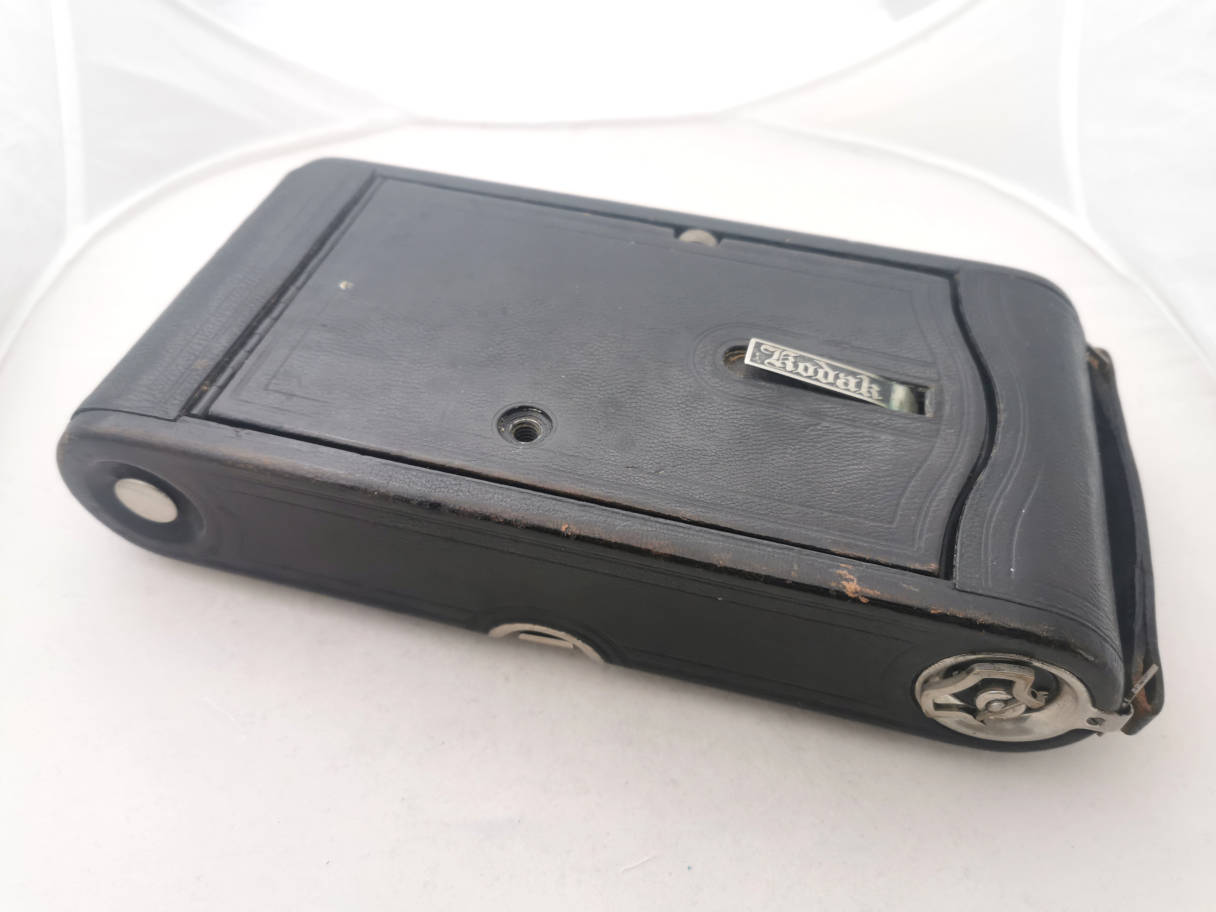
Camera closed. Tripod socket and foldable stand on the bed. Film wind on the right edge.
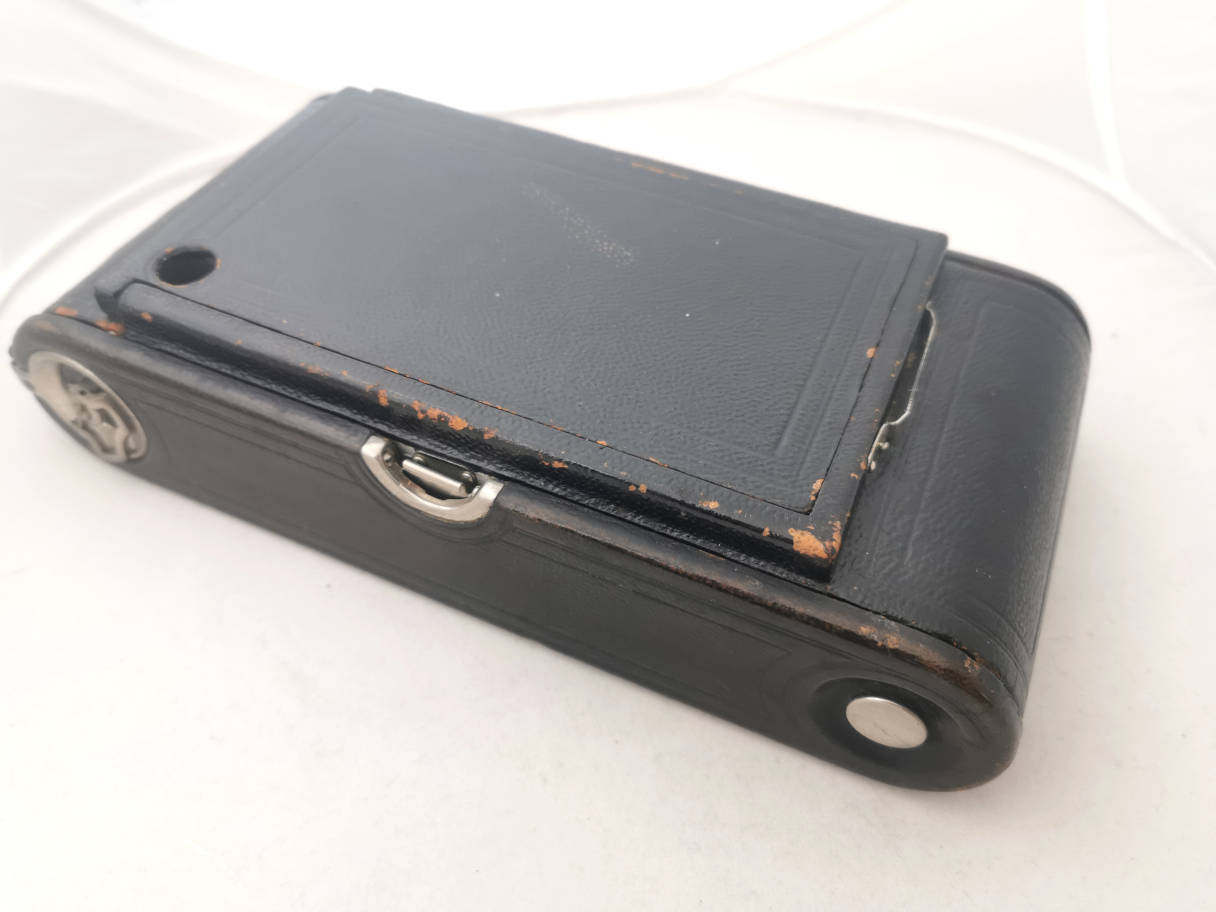
Plate back with roll film blind. Note that for ordinary 122 film the
ruby window is near the wind spool, whereas on autographic cameras it's
near the supply spool.
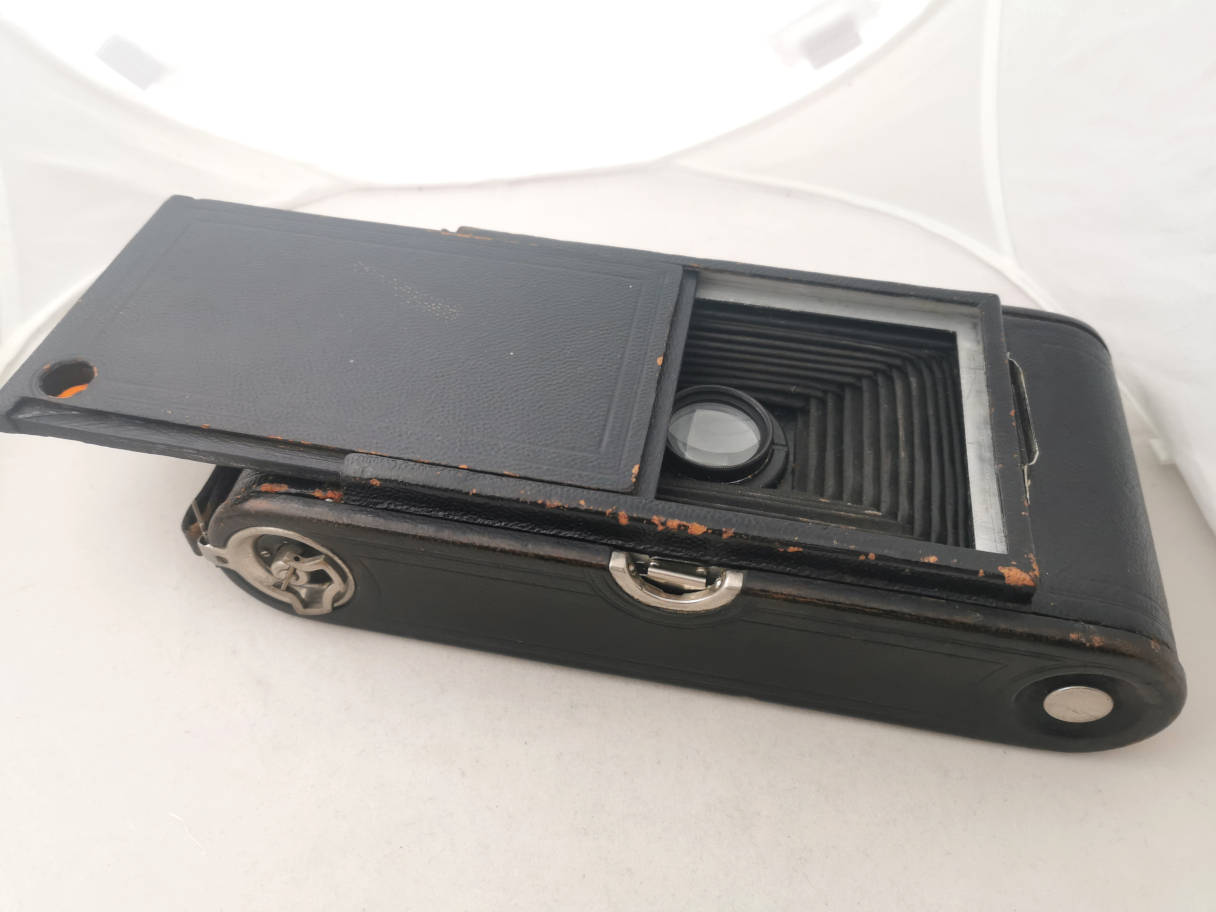
Plate holder open. There was a ground glass insert and plate holders.
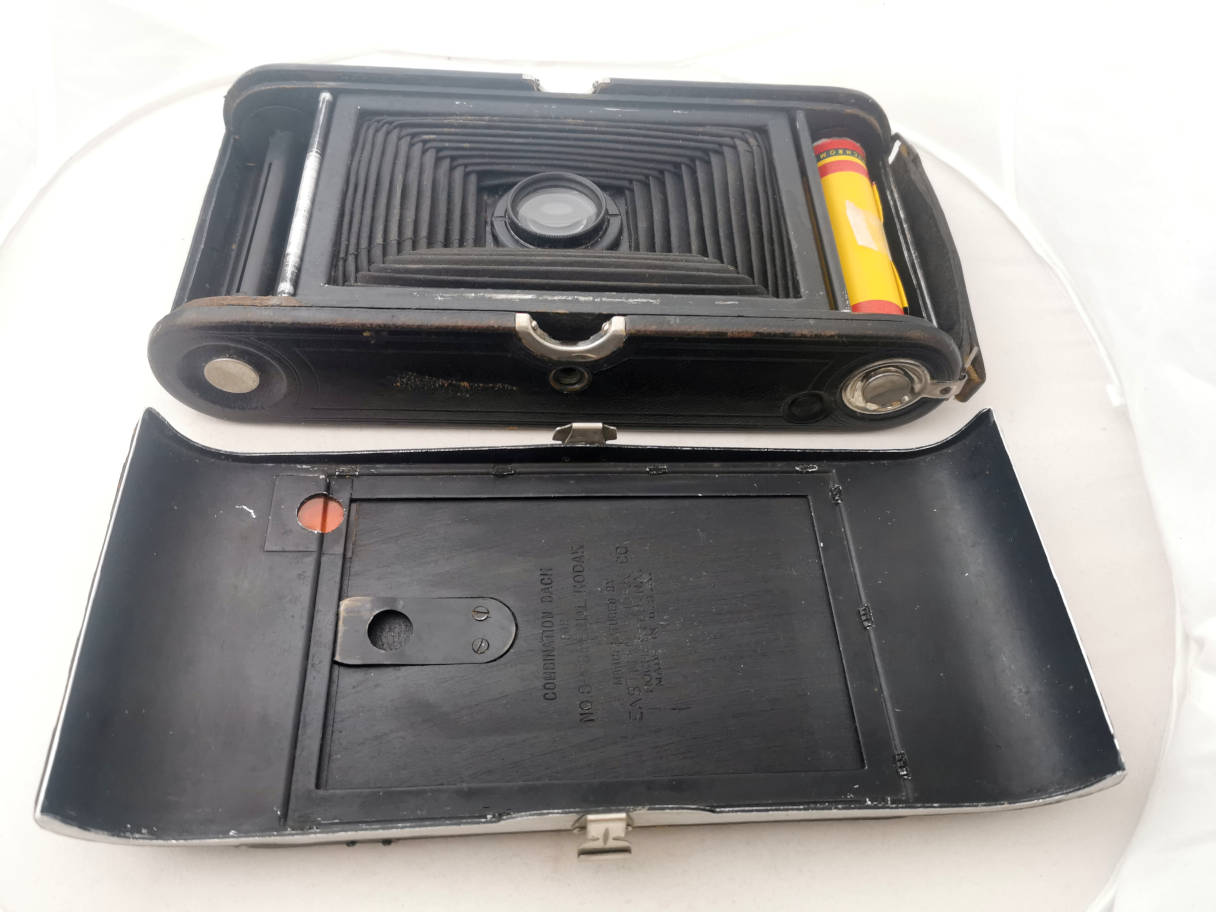
Back open. To open the back squeeze the tabs on both sides to release.
The tabs are different from each other, so you can't mount the back the
wrong way.
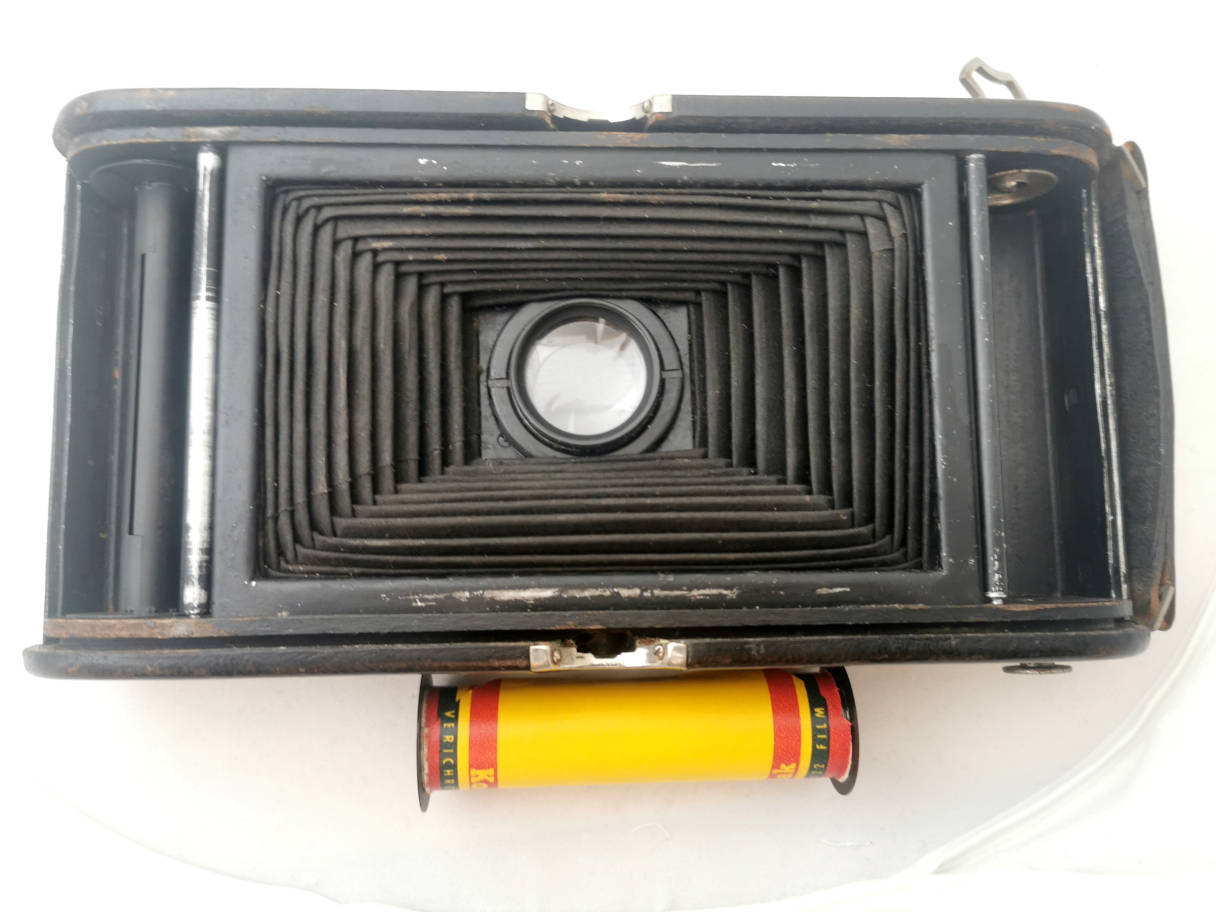
This is what seems to be an unexposed roll of 122 film that came with the camera. I will try to expose and develop it later.

Bed open, front retracted.
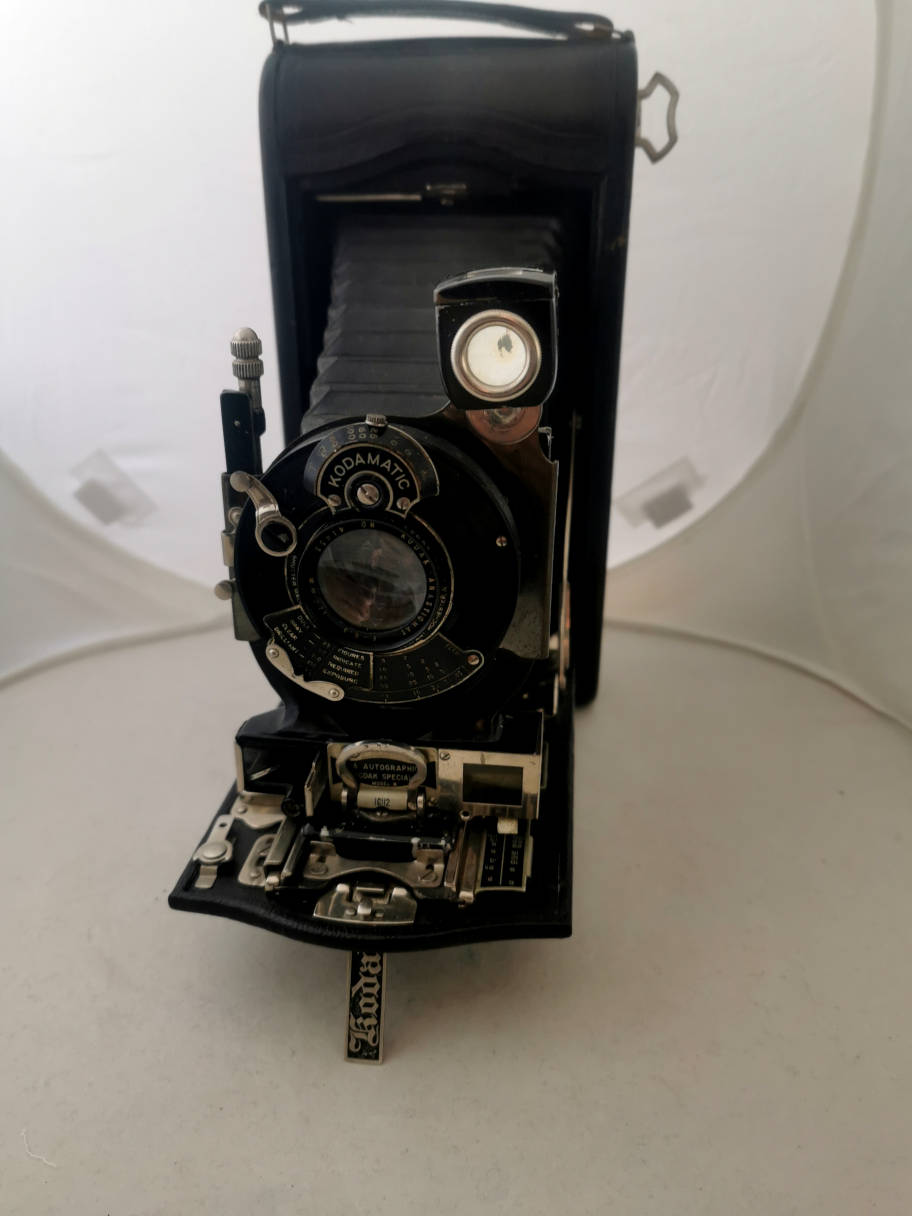
Front extended.
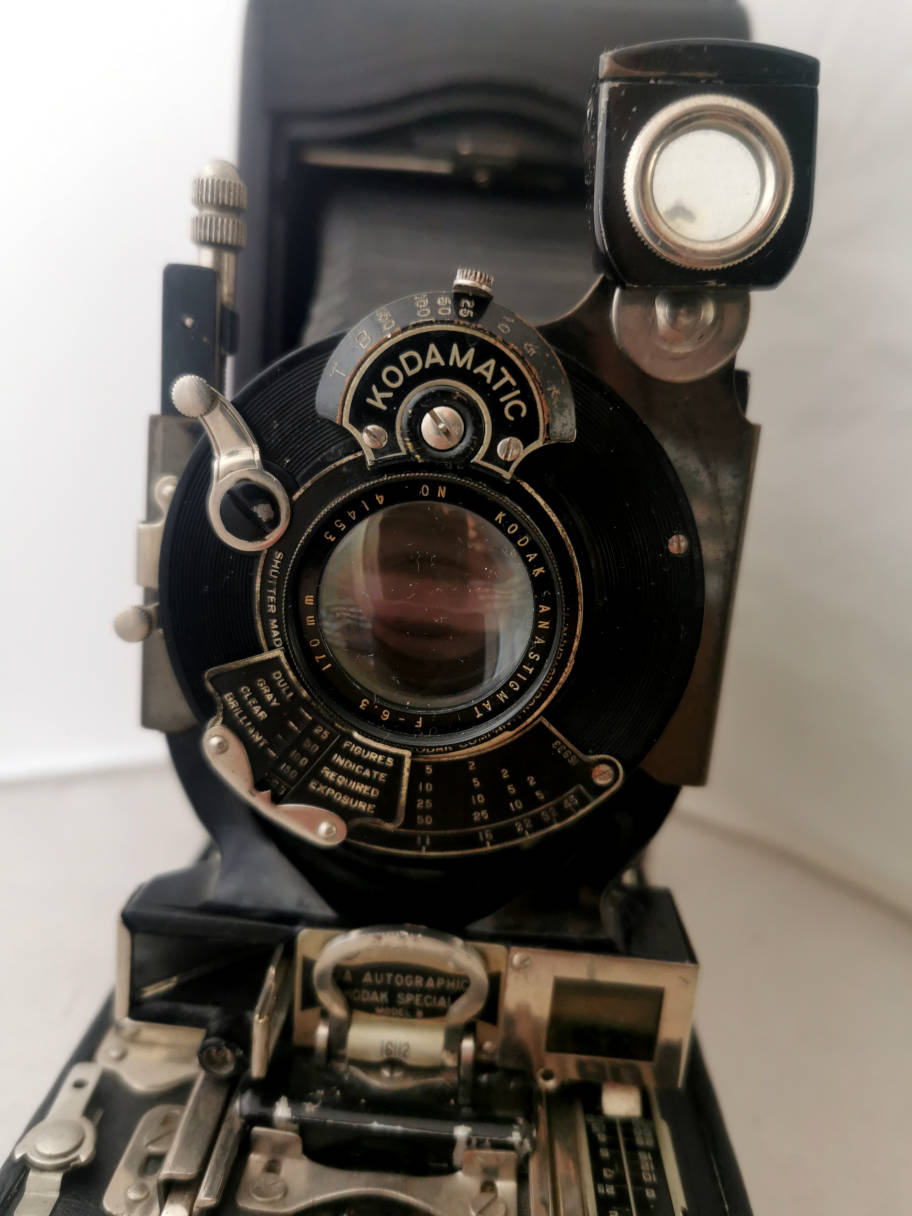
Lens and shutter.
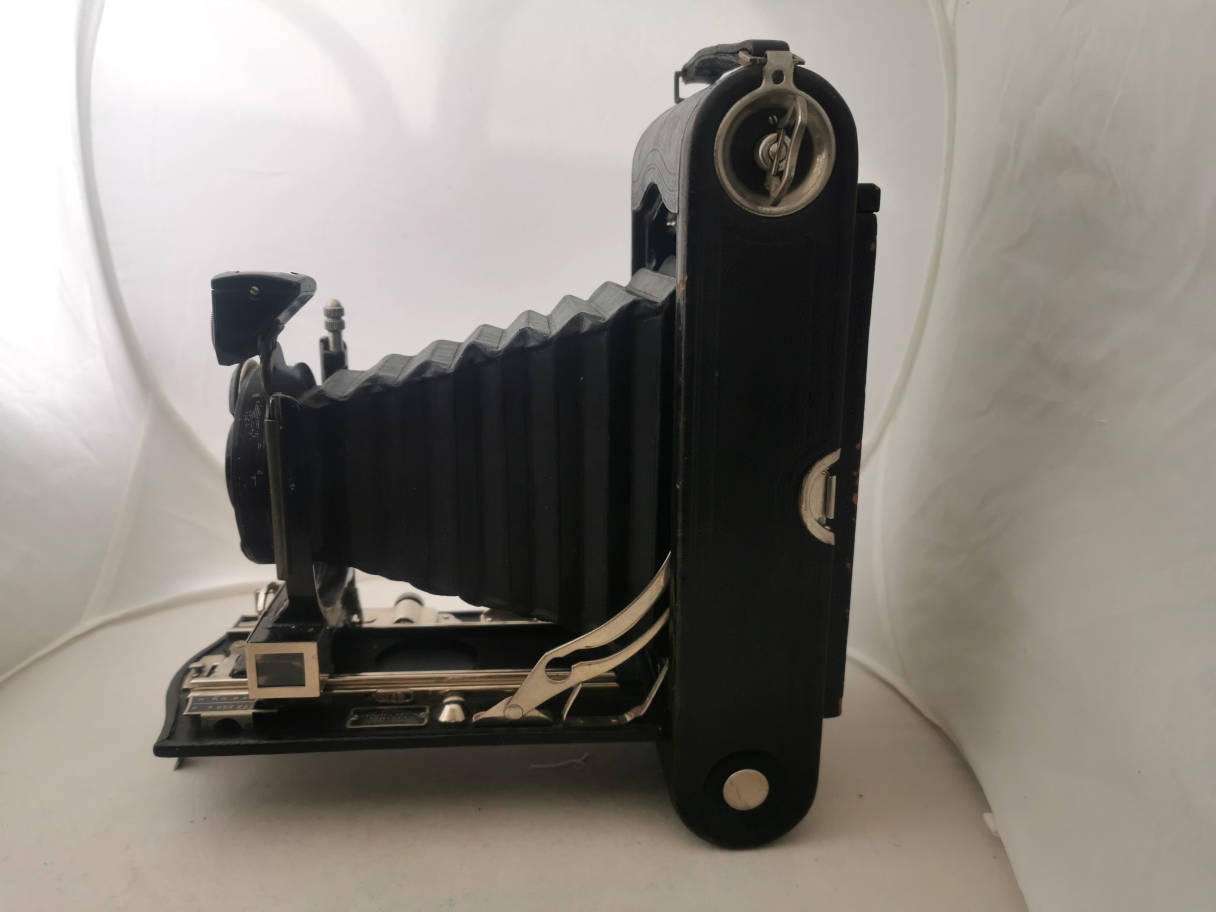
Seen from the right. Distance scale
on the bed.

Seen from the left. Advance knob on the bed. Camera opening button near
the top peg.Tripod socket for landscape format on the housing.
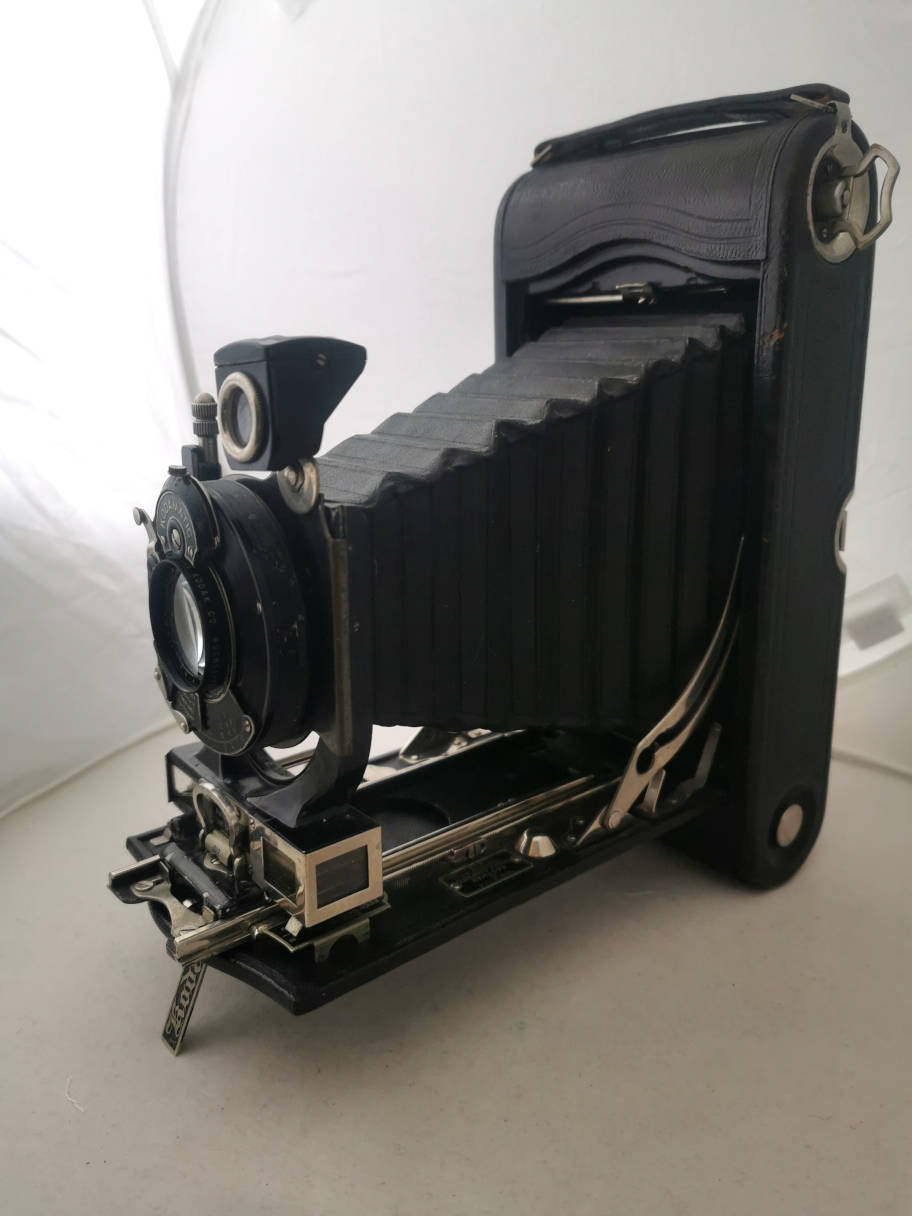
A
big folding camera, but for its format it's small. The negative size is
like 4x5, with a different aspect ratio. Advanced to closest focus
which is 6 feet (1.8m).
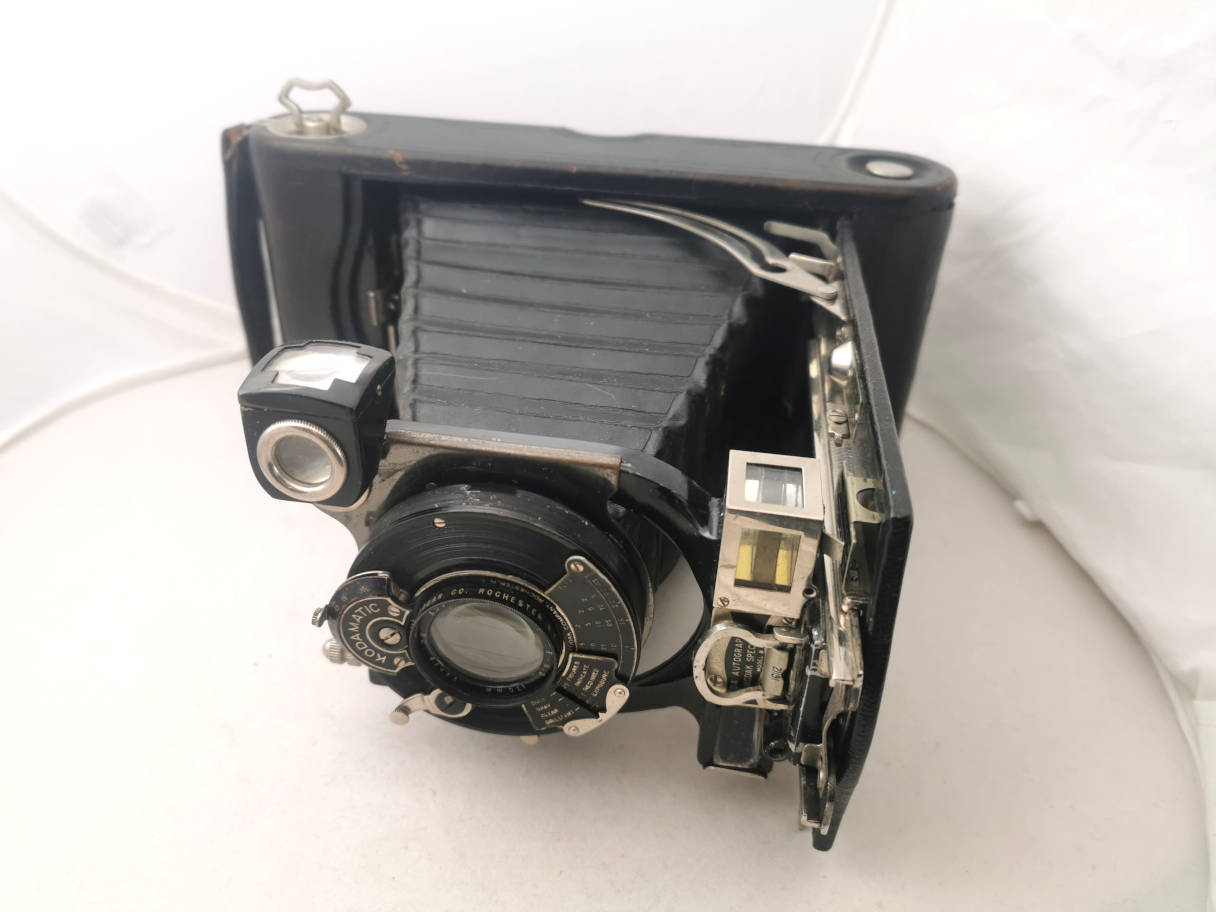
Landscape format. There is a little foldable stand on the edge of the
bed. The finder can be tilted, the rangefinder is accesible.

Rangefinder unit.
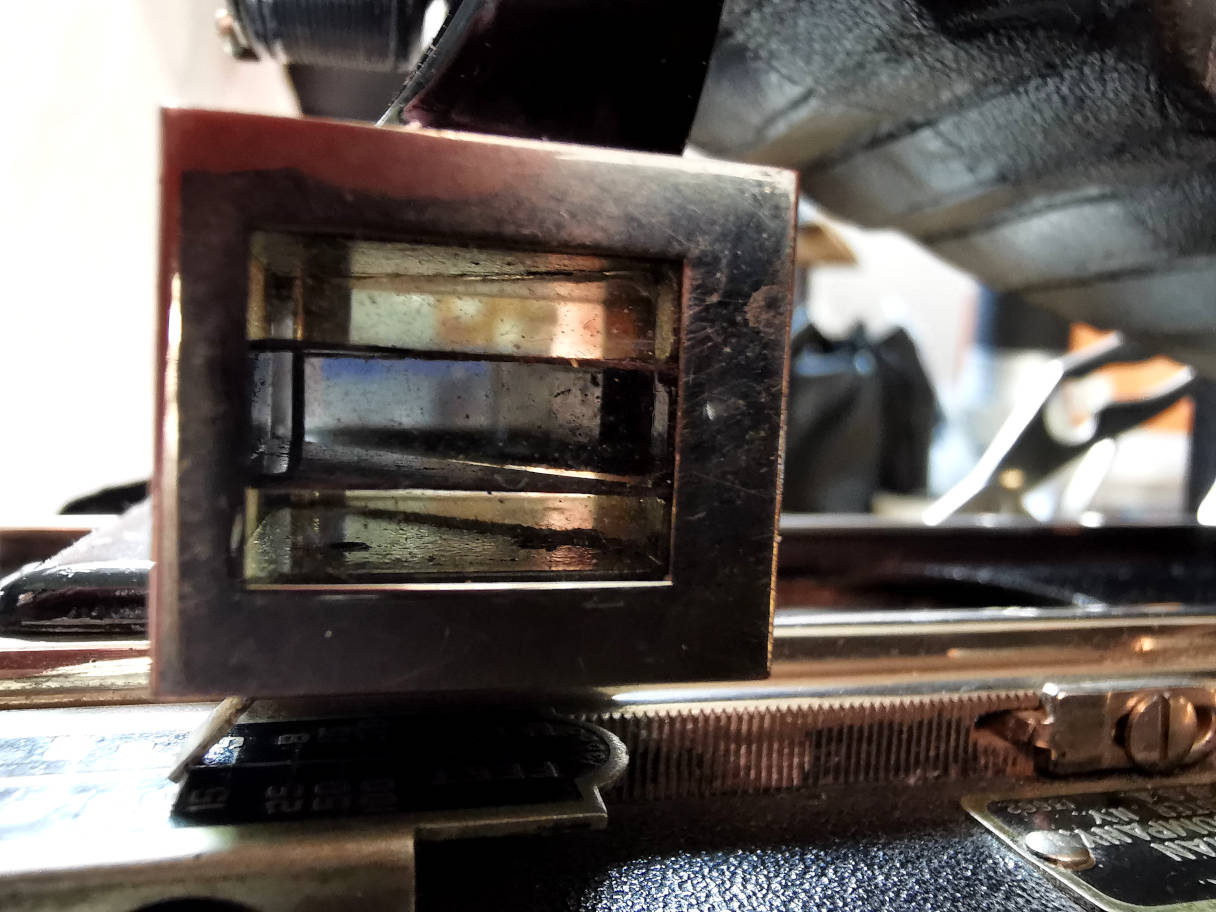
Rangefinder view. It has to be cleaned after 100 years of use, but it
still works. The middle section moves. If all three sections coincide,
it's fine. You have to near your eye quite close to it, difficult to
show with a camera.

The moving part of the rangefinder at close focus....
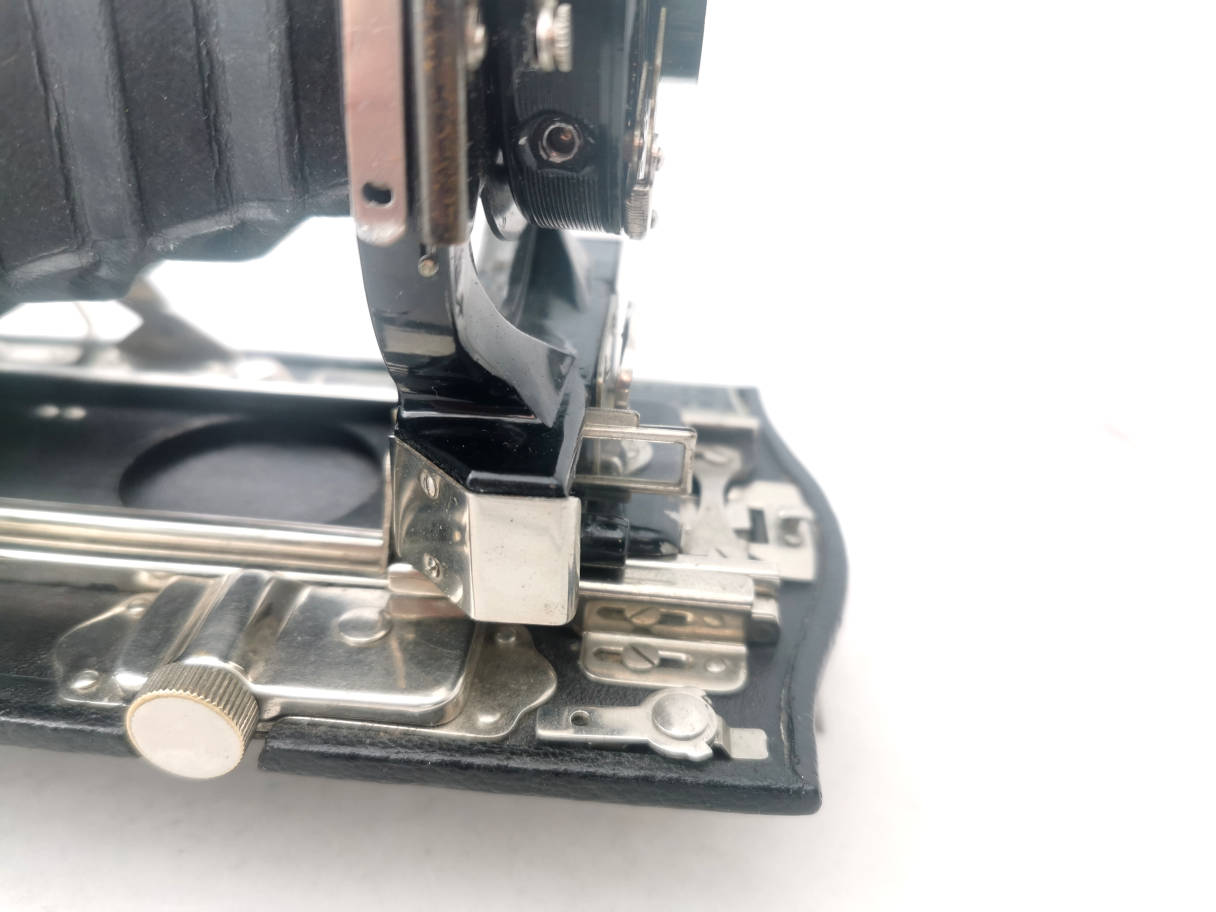
...and at infinity.
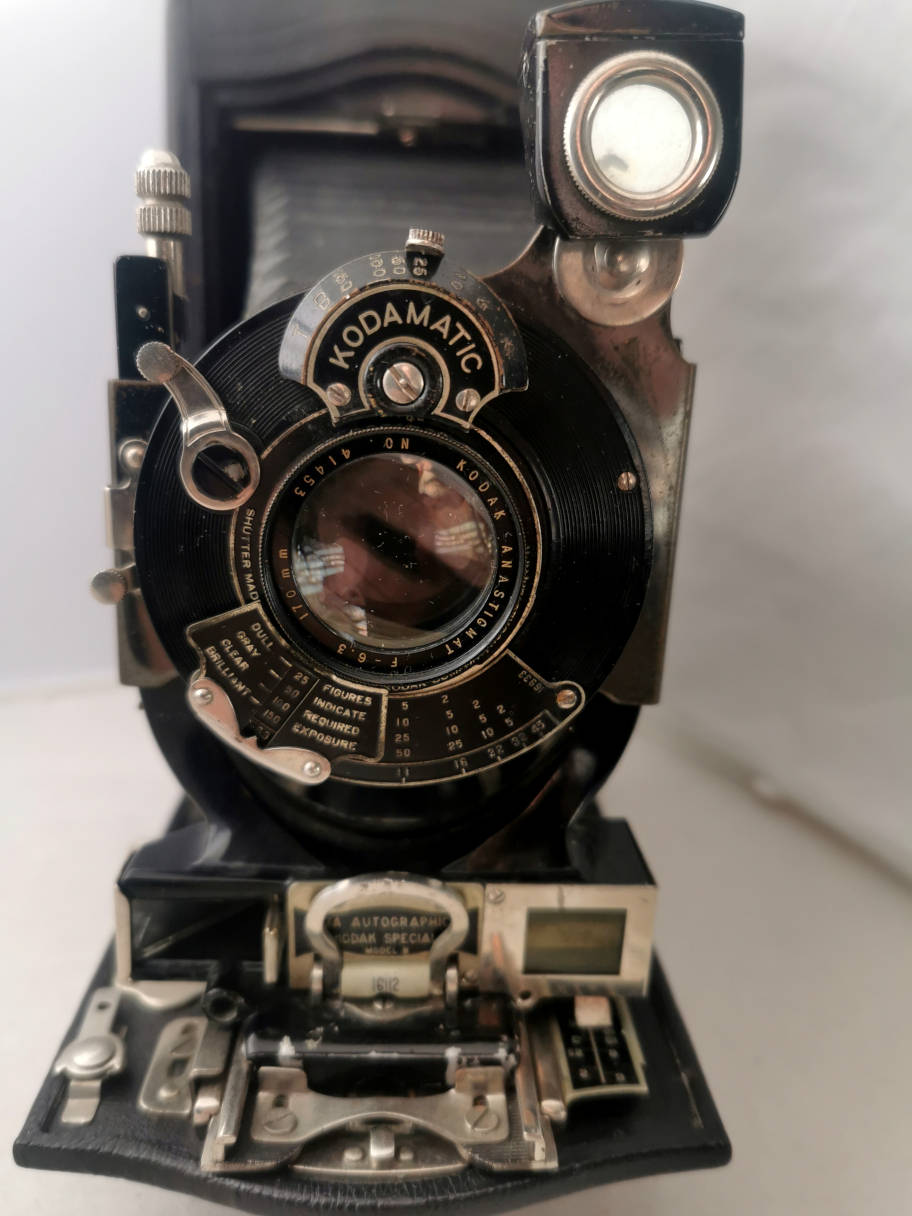
Rise/fall movements possible. Standard setting....
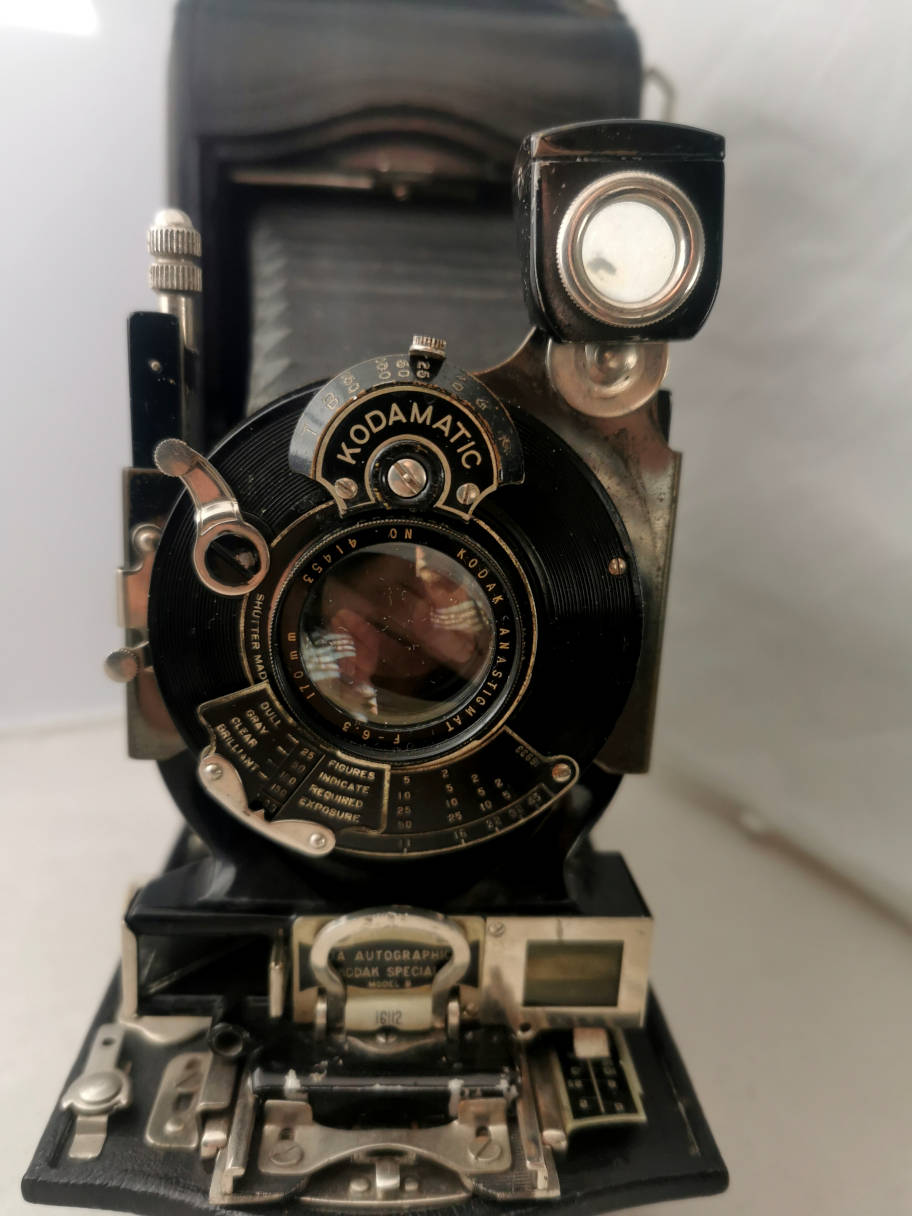
...a bit of fall...
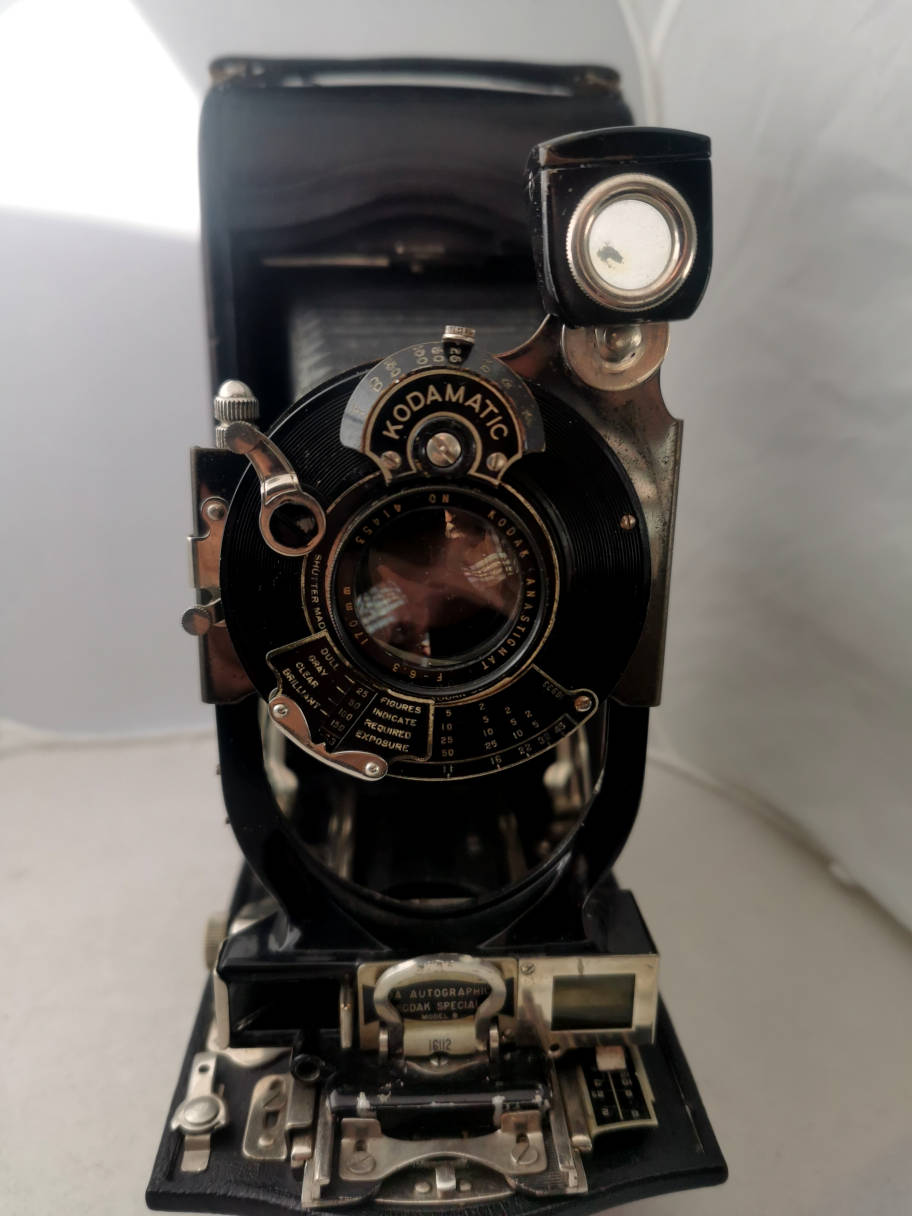
and quite some rise.
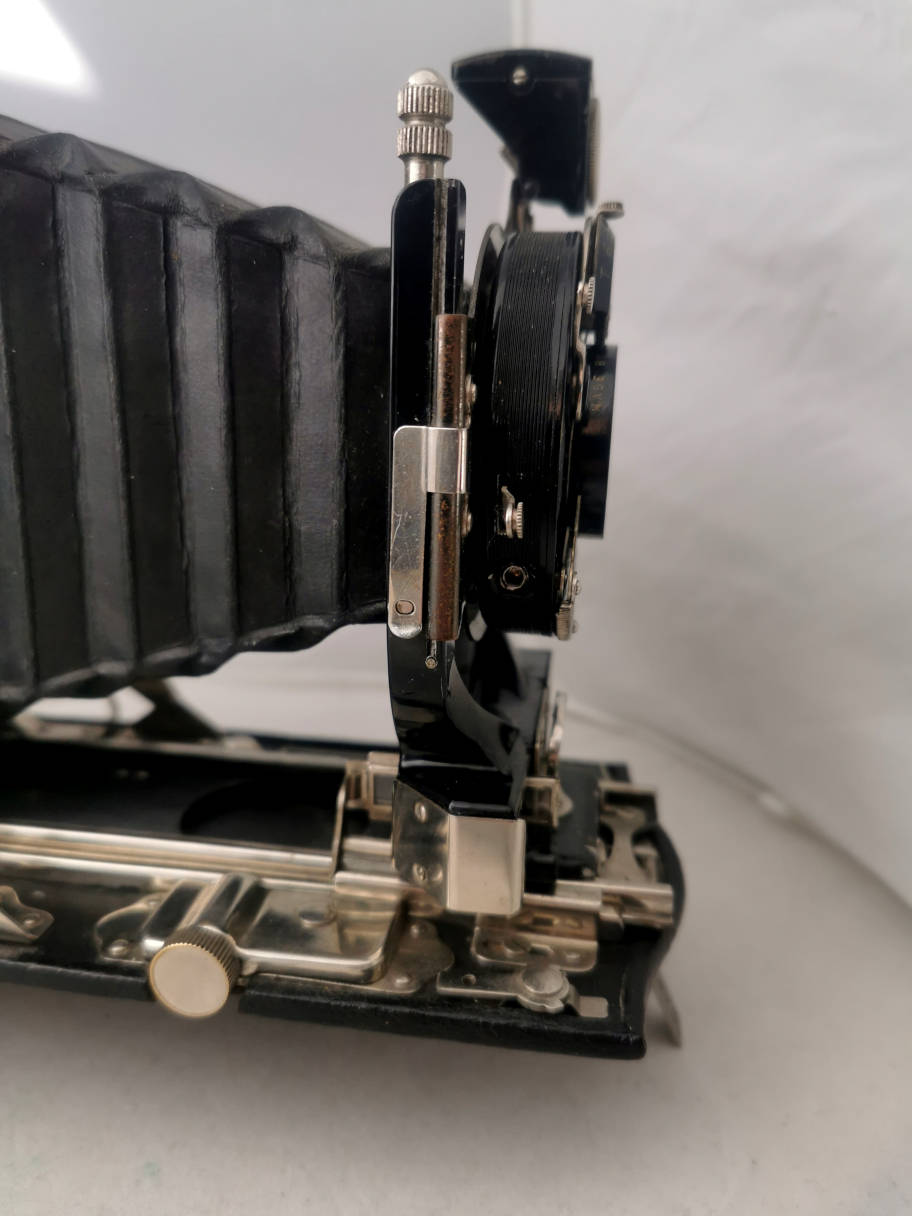
Seen
from the side. There is a spring catch and a little pin which keeps it
in standard position. Lift the catch and turn the knob to lower or
highten. Standard setting....
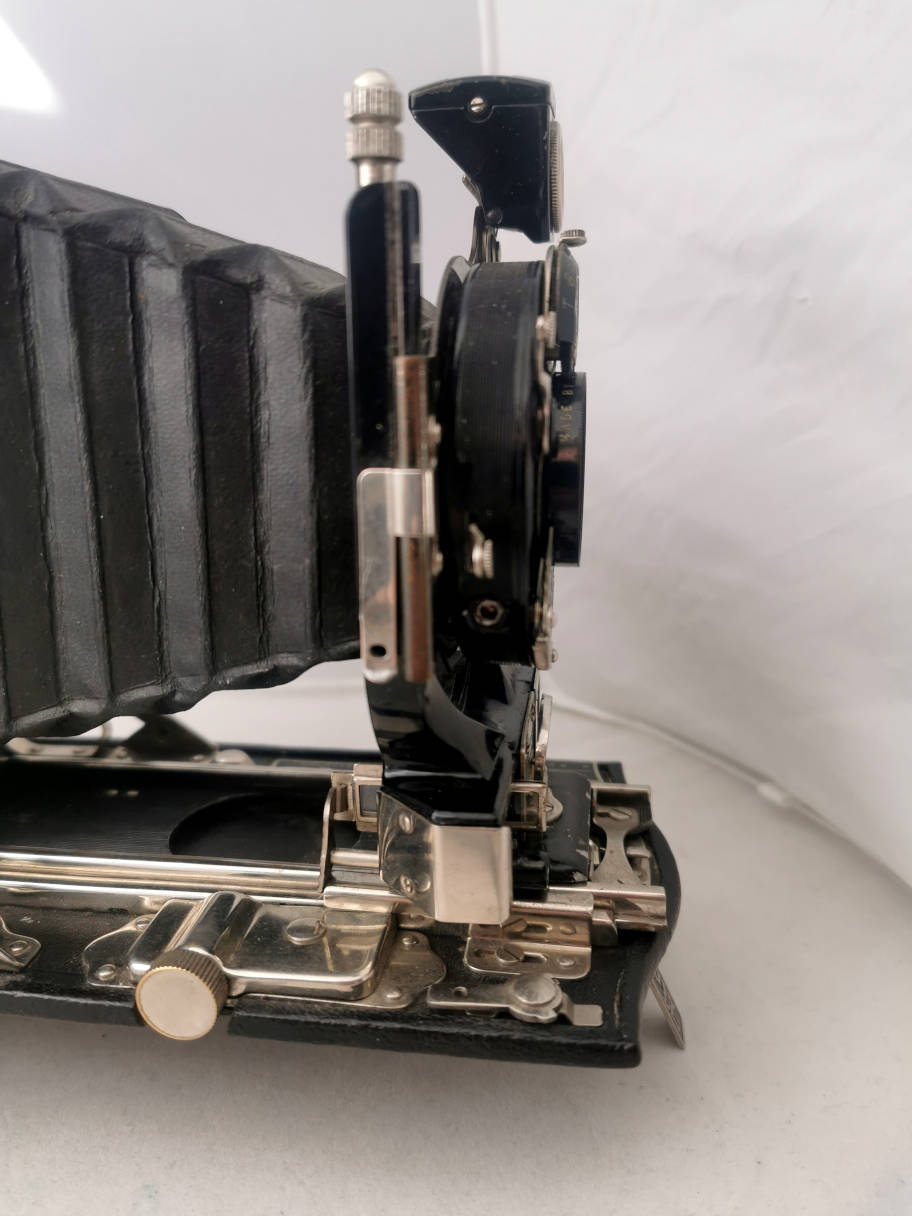
...a bit of fall...
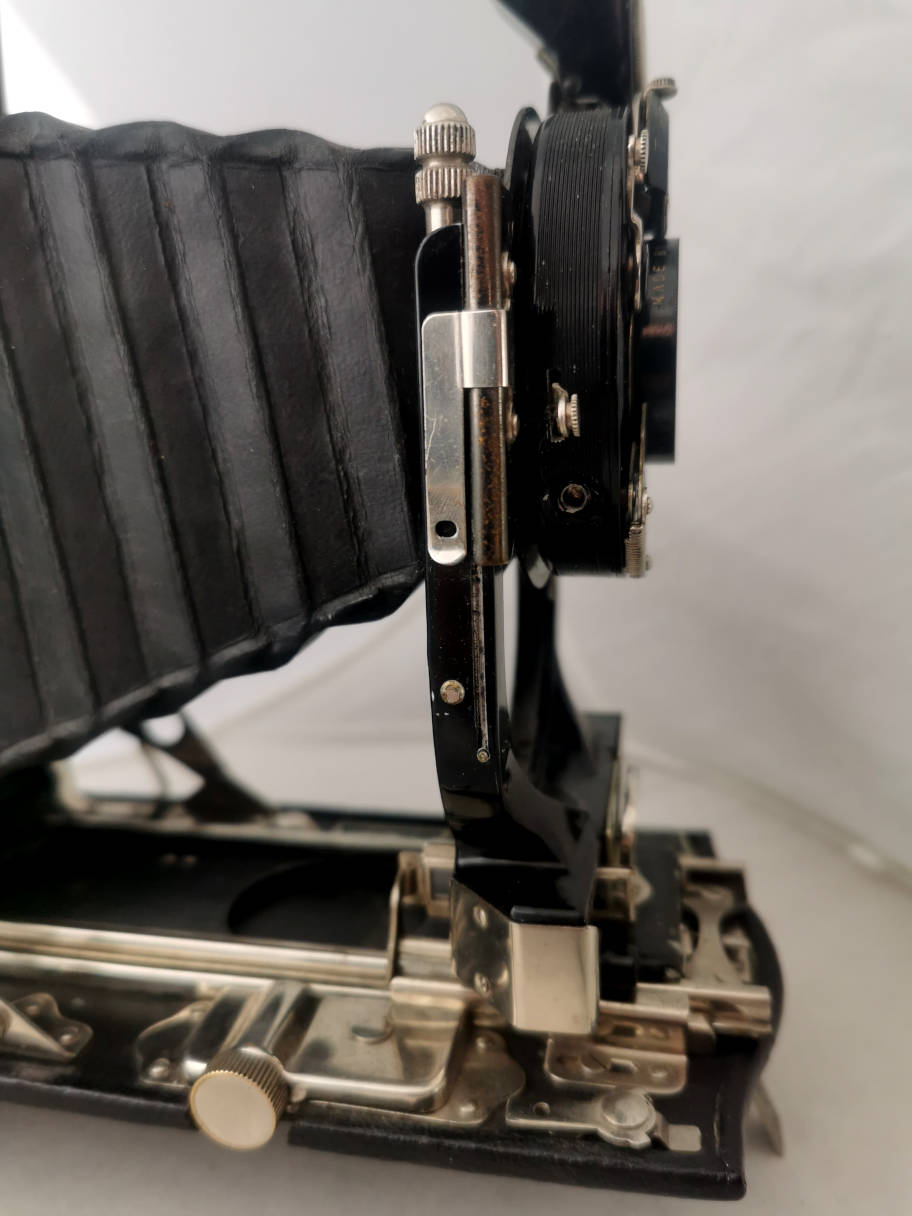
and quite some rise. So you can compensate falling lines with high buildings.

An old standard 9x12 film holder fits into the plate holder unit. You
would have to compensate about 15mm of a gap, an easy job. 9x12 film is
still easily available in Europe.

3 9x12 holders.
Putting
a film is easy, it's like a 120 film camera. The pegs and the wind knob
retract. Put the supply spool. Put the wind spool, tear the film leader
to the wind spool and insert. Wind 2 turns until it is secured. Close
the back and look at the ruby window. It's a long way to turn, after
about 15 to 18 turns a warning hand should pass. Wind further until No.
1 appears.
The camera opens via a button on the left side, near the top. Lower the
bed until it clicks into place. Lower the little handle on the front
standard and pull to extend, there is an automatic stop. Lift the
handle again and it locks. You can either use the finder and the
distance indications or the rangefinder to focus. Set shutter speed and
aperture, cock the shutter. Aim, frame and fire the shutter To shut the
camera, push the front standard to the end of the bed, press the hinges
of the bed and it will close.
These cameras are
about a century old. The lenses are uncoated and the shutters are simple.
Nevertheless they are a good entry into large format. The cameras are
lightweight and very compact seen the film size.
As 122 film is no longer available, you have either to adapt the camera
for 9x12 sheet film, if you have the rare plate holder back, or covert
it to a panoramic camera for 120 film. This is quite easy. I have made a page for this here.























